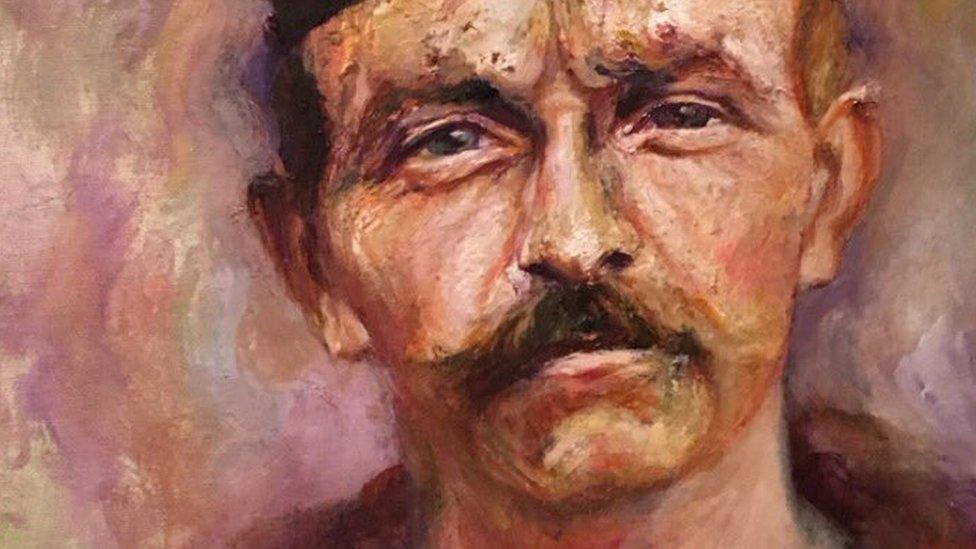The Iolaire disaster: The 'crowning sorrow of the war'
- Published
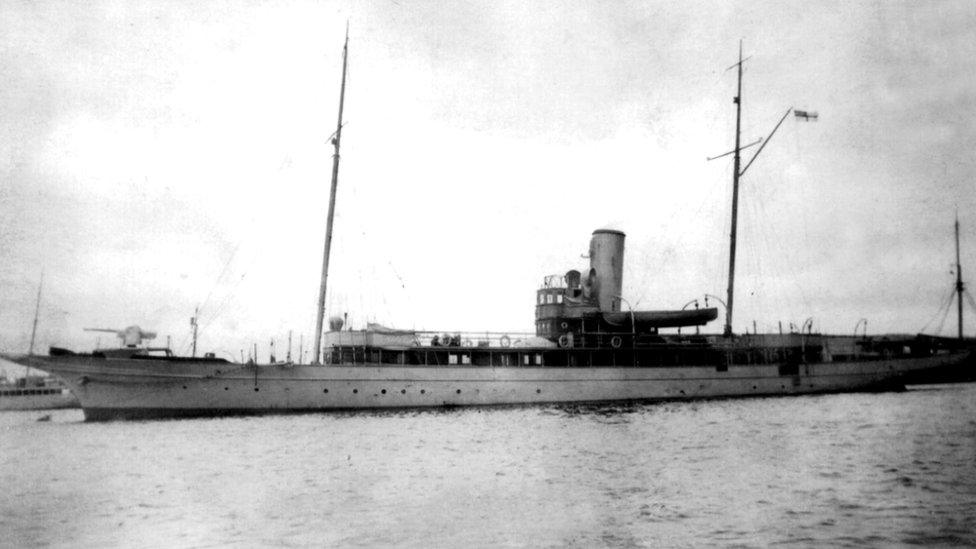
The Iolaire had been a luxury yacht before the war
Just weeks after the slaughter of World War One ended, the Hebridean Isle of Lewis was hit by the "crowning sorrow of the war".
In the early hours of 1 January 1919, naval yacht HMY Iolaire, which was carrying sailors returning from the war, hit rocks as it approached Stornoway and sank.
More than 200 people drowned, just yards from the shoreline and the safety of home.
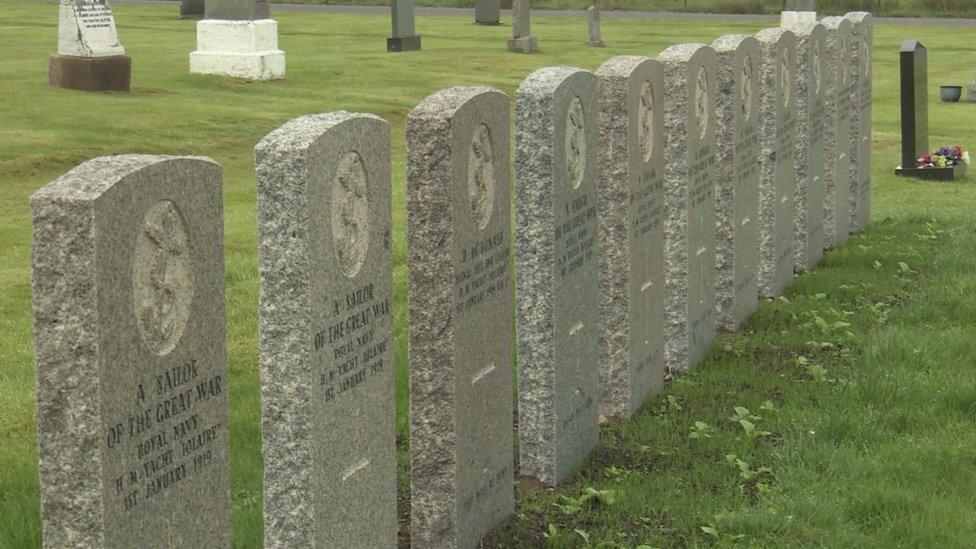
More than 200 died when the Iolaire went down off Lewis
According to local historian Catriona Dunn, Lewis had a hard war with almost 1,000 men dying during the conflict.
She says the islands had already lost a higher proportion of servicemen than most other areas of Britain and this meant the Iolaire disaster was an "unimaginable horror".
"Small communities lost a lot of men, on top of losses during the war itself - there was just an unspeakable grief," she says.
Many feel that what happened contributed to future emigration from the Western Isles.
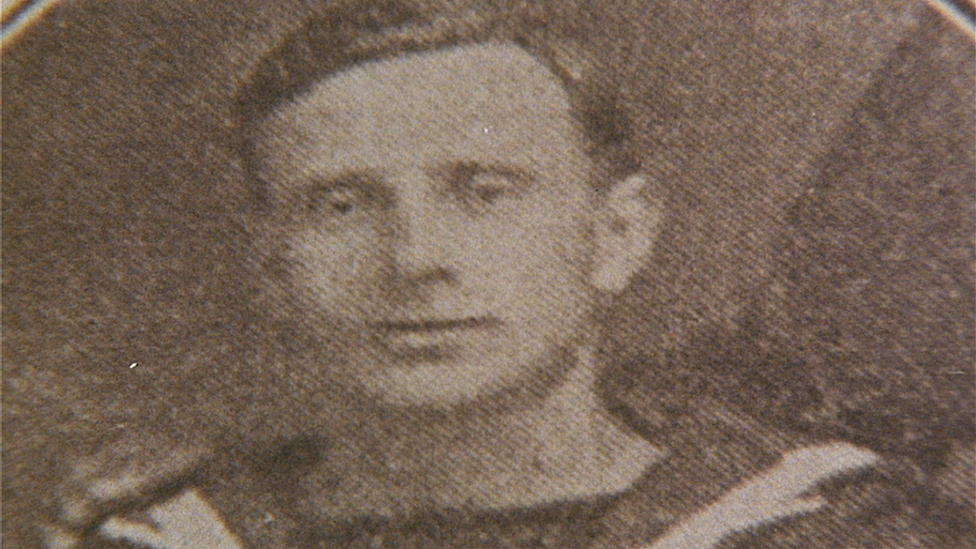
John Finlay Macleod managed to get a rope to shore and saved about 40 people
A total of 79 men managed to survive the sinking.
John Finlay Macleod, from Ness, helped save about 40 of them.
He grabbed a rope, gave one end to a man onboard, and prepared to swim ashore through the violent sea.
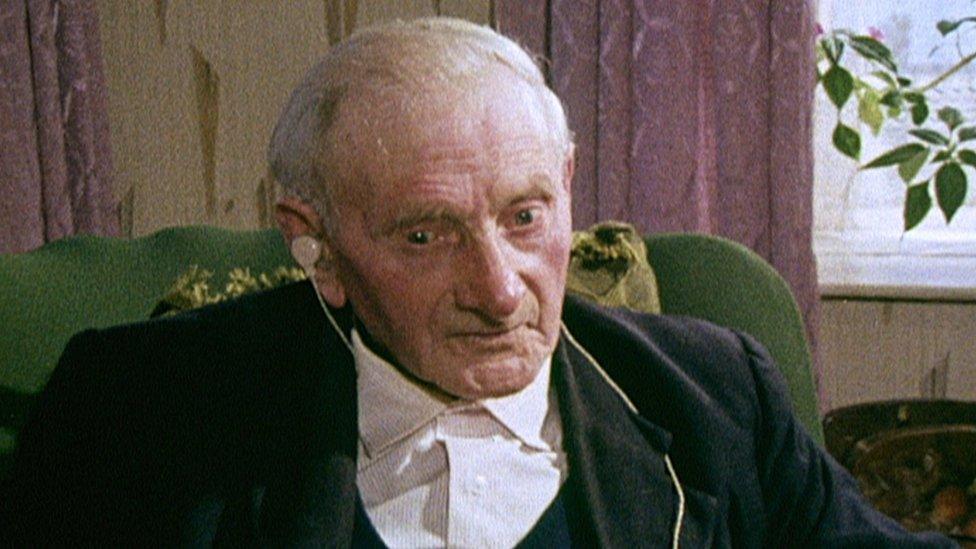
John Finlay Macleod, in his 80s, told a BBC documentary about the rescue
Speaking in an interview in 1973, he told how it was not far to the shore but the waves were terrible and pushed him back further than he had been before he started.
Mr Macleod, who was 30 at the time, said he succeeded in getting to the rocks by keeping afloat and then riding in on the crest of the wave.
He was thrown on to the rocks but managed to cling on, establishing a rescue line that others used to get to shore.
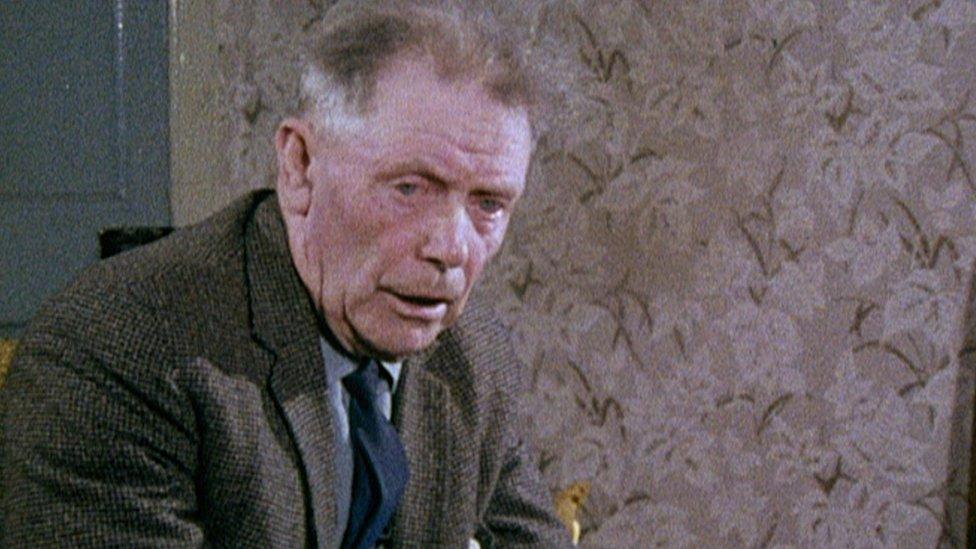
Donald Morrison survived by clinging to the mast of the ship
Another survivor, Donald Morrison clung to the mast of the ship all night, awaiting rescue.
He also described what happened in the 1973 documentary.
"I could see the big sea coming, and I would squeeze myself onto the mast," he said.
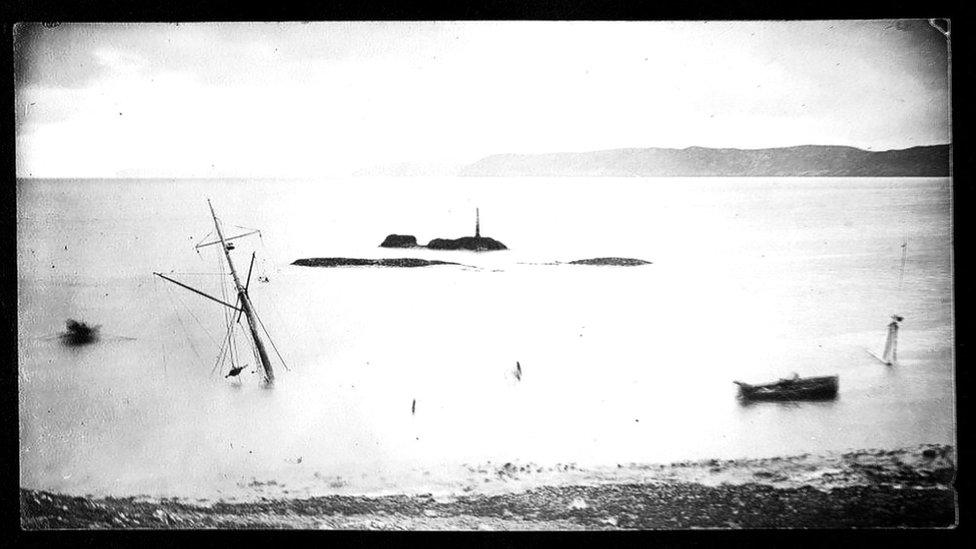
A photo of what remained of the Iolaire after the tragedy
"I heard a crash, and the other mast had broken, and the two men who were on it had gone too, and there I was all by myself till daybreak."
The survivors, and the bereaved, sought answers at the time, but a public inquiry into the disaster lasted just two days and many questions remain.
The men who died were mostly Royal Navy reservists who had been serving during the war.
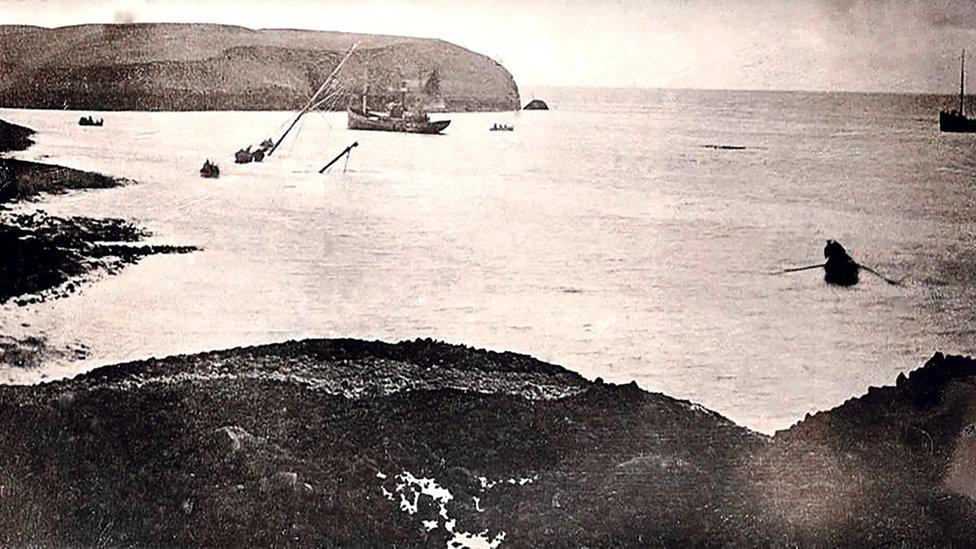
The Iolaire was wrecked just yards from the coast
They had arrived by rail at Kyle of Lochalsh on the western Highlands mainland and were looking forward to catching the steam-ferry home.
The regular ferry, the SS Sheila, was soon packed so the Royal Navy ordered the Iolaire across the Minch from its berth in Stornoway to carry the extra men left behind.
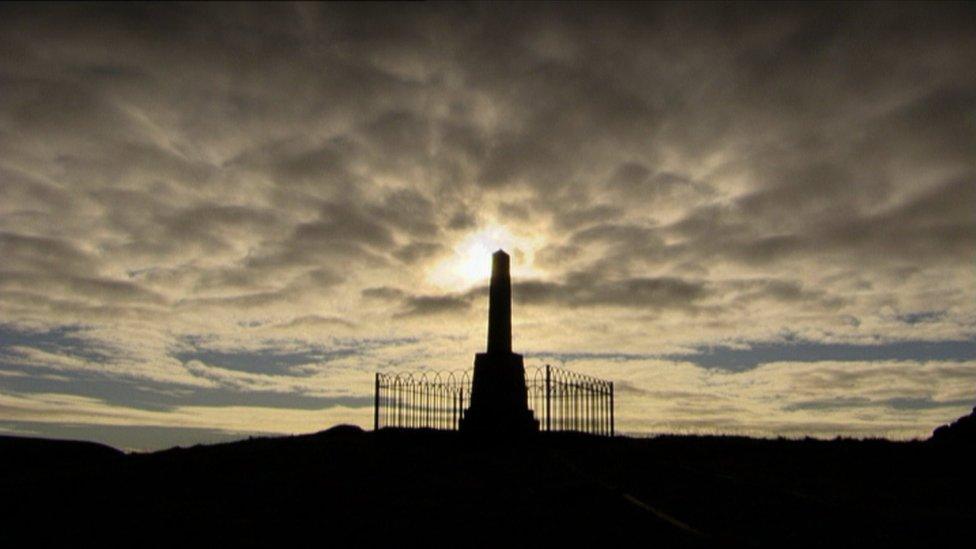
There is a monument to those who died on Lewis
The Iolaire had been a luxury yacht before the war, sailing under the name of the Amalthaea.
It was used by the navy in anti-submarine and patrol work and was renamed the Iolaire - Gaelic for "Eagle".
Discussions about whether the Iolaire had enough lifeboats and lifejackets were cut short when two more trains arrived at the quay with more men hoping to get home for the new year.
This meant the master was keen to get the sailors onto the ship.
The Iolaire set sail from Kyle of Lochalsh at about 19:30 in strong winds.
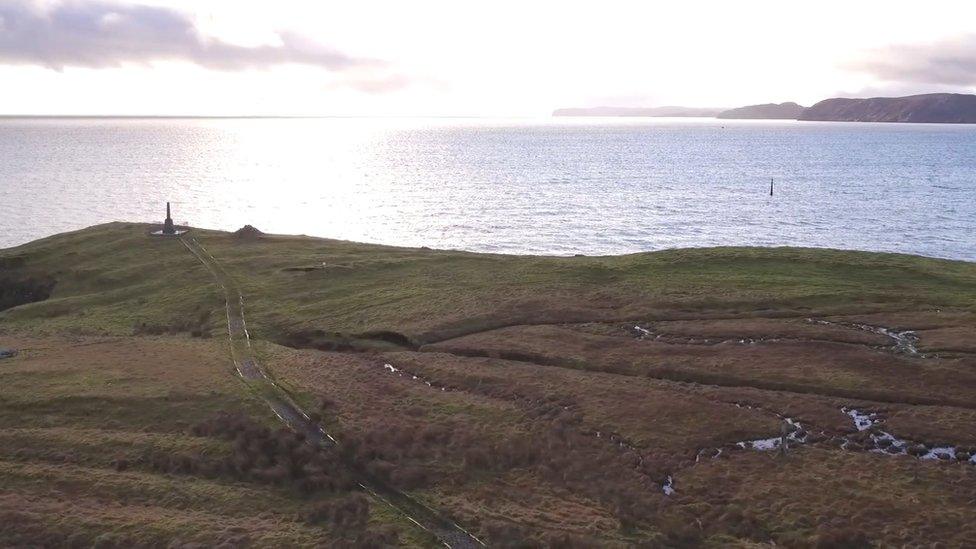
A few miles off Stornoway the weather got much worse and as the Iolaire made its final approach into Stornoway harbour in a strong gale, it is believed the boat changed course at the wrong point.
With the lights of the harbour in sight, the ship struck rocks known as the Beasts of Holm at full speed and immediately began to tilt, filling up with water.
The men were just 20 yards from the shoreline when the Iolaire hit the rocks just before 02:00.
The author of a new book on the disaster, Malcolm Macdonald, says a strengthening wind may have contributed to what happened.
'Minor navigational error'
"I think with the wind behind her, she turned to port and into Stornoway too late," Mr Macdonald says.
"It was a minor navigational error, but a catastrophic one as well," he says.
Of those known to have died, 174 came from Lewis, with seven Harrismen among the dead. A further 18 crew and two passengers on their way to the Stornoway Naval Base were killed.
At the time of the incident, such was the grief on the island that few families spoke of what happened.
A hundred years on, attitudes are changing though, according to the Iolaire Working Group.
'Providence robbed from us'
"Going through school I heard very little about the disaster, people didn't want to talk about it," explains Colin George Morrison from the group.
"Young people are certainly more aware of the incident, and hopefully that will continue in the coming years," he says.
The commemorations on New Year's Day will mark the culmination of a year of remembrance on the islands through different projects.
On Hogmanay there will be a torchlight procession in Stornoway, with each torch representing a life lost in the disaster.
A special ceremony near the wreck site on 1 January will bring together descendants of those lost, and dignitaries, including representatives of the Royal Family and the Scottish government.
Catriona Dunn, who herself lost relatives in the disaster, feels the events are hugely significant.
"These commemorations are bringing it to people's attention once again. We are mourning again people we never knew," she says.
Commenting on the impact on the island community, she added, "We will never know what providence robbed from us."
- Published13 December 2018

- Published6 November 2018
